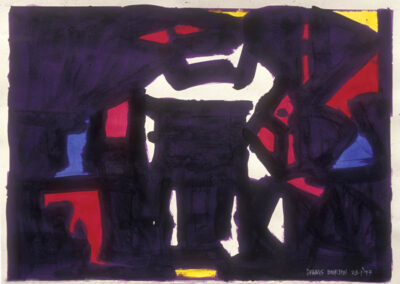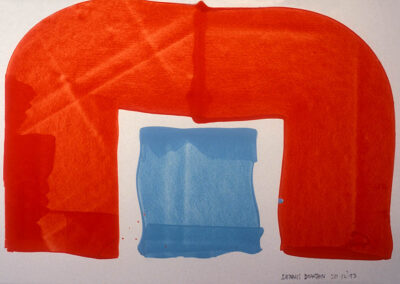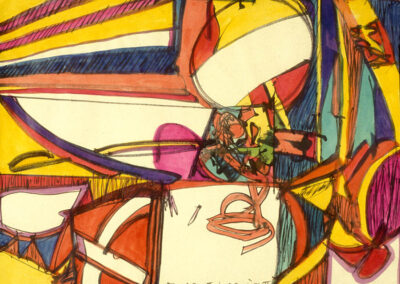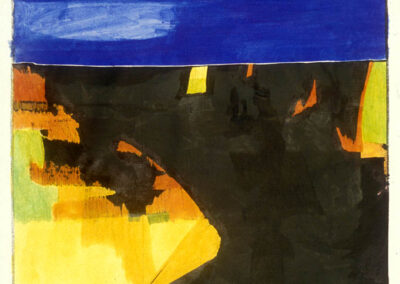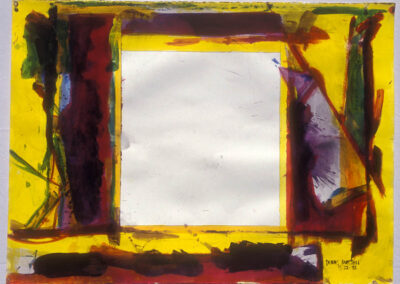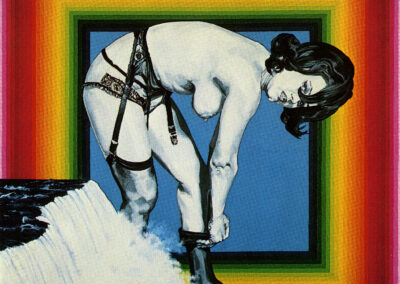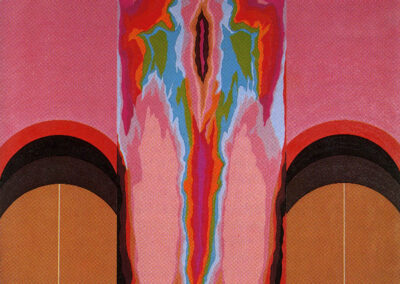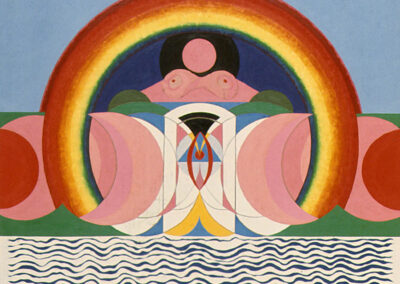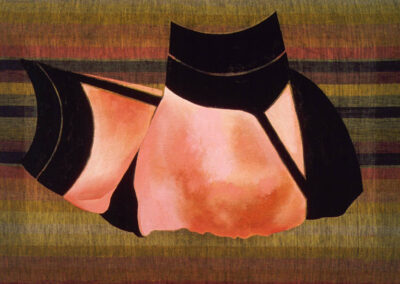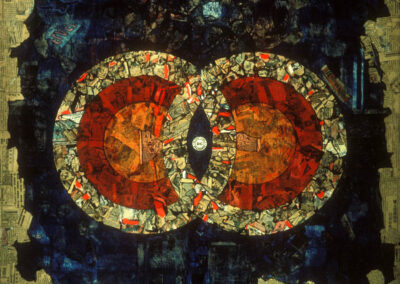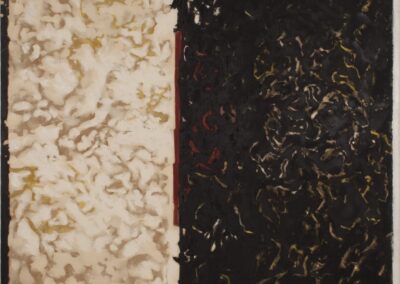Our next Artist You Need To Know is Dennis Burton (1933 – 2013). He was a Canadian artist who worked primarily in painting, but he is also remembered for how he was a fierce advocate for Toronto’s artistic and cultural community scene. But Burton also was instrumental in raising the level of respect and consideration for Canadian art on an international level (he is often mentioned in tandem with several previous artists we’ve featured here, including Gordon Rayner, Robert Markle and Graham Coughtry).
Art historian and curator Joan Murray declared that “his paintings, figurative, abstract or calligraphic, are full of dashing energy.”
-
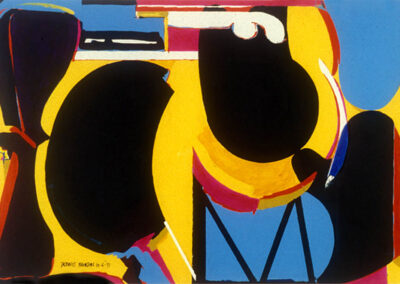
M in the Sky,1993
-

Mysterious, 1993
-

Surround, 1993
-

Colour Confusion, 1984
-

Valley of Shadows, 1982
-

Window, 1984
Dennis Burton was born in Lethbridge. He attended the Ontario College of Art (he was there at the same time as Jock MacDonald and Fred Hagan), and worked at the CBC until 1960 when he focused on painting full time.
“Over the course of his career, much of it spent in Toronto, where he taught painting and drawing at the Ontario College of Art (1970-1971), [he] was Director of the New School of Art (1971-1977) and President of Art’s Sake (1977-1978). Further afield, he taught at the Banff School of Fine Arts (1974), University of Lethbridge (1976 & 1989) and the Emily Carr College of Art (1980). Students remember being inspired by his erudite commitment to communicating a sense of contemporary aesthetics in a spirit of enjoyment.” (from here, speaking of an exhibition at Christopher Cutts Gallery that was mounted posthumously, to commemorate his six decades of artmaking, advocacy and education)
-

Observation, 1979
-

Six Questions, 1976
-

Anti-Eroticism, 1979
-

Cyclops / Oracle, 1967
-

Niagara Rainbow Honeymoon No. 1 - The Bedroom, 1967 - 1968
-

Yonique Metaphor - Prismadame, 1967
In 1955, Burton was deeply effected by an exhibition of Painters Eleven he experienced at the University of Toronto. This shifted his own practice towards abstraction, though the influence of Neo Dada (then a strong current in the Toronto art scene, that would encompass roughly a decade from the 1950s into the 1960s) pushed him towards using found materials in a number of sculptural works. Burton is often considered part of the Isaacs Group of artists (referring to Toronto’s Avrom Isaacs Gallery), as he exhibited there frequently (notably with solo shows in 1961, 1962 and 1965).
Several of Burton’s figurative, erotic works garnered attempts at censorship, and in one fine bloviating example politician John Diefenbaker felt the need to “denounce Dennis Burton in the House of Commons, coining the term “garter belt-maniac”” (this was in response to Burton’s Garterbeltmania works, exhibited in a retrospective of the artist’s work in 1977, which ‘dared’ to depict females in their underwear).
However, Burton never limited himself to figurative or abstract compositions, often moving back and forth, and in many ways he was really interested in “using different creative strategies involving language, colour and form.” (both citations are from here)
-

Niagara Rainbow Honeymoon II, 1967
-

Bedspread, 1965
-

Dog Bone Girl for F. Bacon, 1965
-

Venus Observa, 1965
-

Silkscape, 1965
-

American Heroes & Foes, 1963
His work can be found in a number of collections, including the Art Gallery of Ontario, The Canada Council Art Bank Collection, The Hirshhorn Museum, (Washington, D.C.), Glenbow Museum (Calgary), Los Angeles County Museum, Montreal Museum of Fine Arts, National Gallery of Canada, Robert McLaughlin Gallery (Oshawa), Smithsonian Institution (Washington, D.C.), Southern Alberta Art Gallery (Lethbridge), Vancouver Art Gallery and the Walker Art Center (Minneapolis).
In ending, I’ll return to the review written about the previously mentioned posthumous exhibition of Dennis Burton’s life and career (written by a previously featured Artist You Need To Know, Ashley Johnson): “Burton’s commitment and integrity stand out for me. His paintings are uncompromising and express his ideas regardless of commercial interest. Toronto should be very proud of his contribution and indeed, those of his fellow travelers, represented mostly by the Isaacs Gallery. Their achievements need to be celebrated in a museum exhibition and publication. It will be up to the city to embrace them and ensure that this history is secured.”
Burton passed away at the age of 79 in Toronto in 2013. Many more of his works can be seen here.

